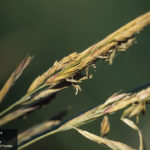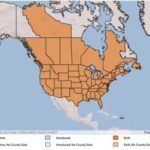Spartina spp.
Illustration courtesy of University of Florida/IFAS Center for Aquatic and Invasive Plants. Used with permission.
What is Cordgrass?
Physical Characteristics
Leaves:
- Sharp
- Spine-like
Flowers:
- Loose
- Branching
- Clustered
Stem:
- Hollow stems
- Up to 8 feet tall
- Clustered
- Creeping rhizomes
Where Does it Grow?
USDA, NRCS. 2018. The PLANTS Database (http://plants.usda.gov, 28 March 2018). National Plant Data Team, Greensboro, NC 27401-4901 USA.
There are 6 different species of cordgrass in Texas. Cordgrass can be found in marshes, swamps and coastal prairies.
Is it Invasive?
Although some species of cordgrass are native, they can be aggressive invaders. Cordgrass can form dense clusters up to 80 feet across.
Pros and Cons of Cordgrass
Submerged portions of all aquatic plants provide habitats for many micro and macro invertebrates. These invertebrates in turn are used as food by fish and other wildlife species (e.g. amphibians, reptiles, ducks, etc.). After aquatic plants die, their decomposition by bacteria and fungi provides food (called “detritus”) for many aquatic invertebrates.






